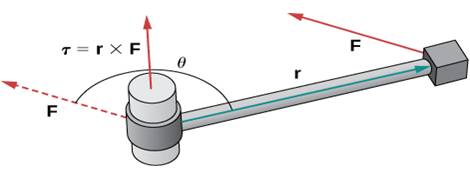Section 2.4 - The cross product
Section Objectives
- Compute the cross product of two vectors.
- Find a vector orthogonal to two given vectors.
- Use the cross product in applications of area, volume, and torque.
The cross product
The next product of vectors that we study is the cross product. The cross product of two vectors in 3-space is the vector product denoted by the times symbol and defined as follows:
The most popular way to remember the cross product is to think of it as a 3-by-3 determinant:
Examples
- Let and . Compute and .
- Compute and .
- Make up any random vector in 3-space. Call it and then compute , for any scalar .
Properties of the cross product
Let , , and be vectors in 3-space, and let be a scalar.
- , where is the angle between and .
- is orthogonal to both and .
- If and are nonzero vectors, the direction of satisfies the right-hand rule.
- The area of the parallelogram determined by and is .
- The volume of the parallelepiped determined by , , and is .
Examples
- Find a vector that is orthogonal to both and .
- Find the area of triangle , where , , and . Follow-up: What if the points , , and just happened to be collinear?
- Find the volume of the parallelepiped determined by the vectors , , and . (The product in property 11, which is also in property 6, is called a scalar triple product.)
Torque
Torque measures the tendency of a force to produce a rotation about an axis. Let be the vector from the rotation axis to the point of application of the force, . Then the torque is given by
The torque is a vector that is perpendicular to both and , and it's direction is determined by the right-hand rule.

Examples
- A bolt is loosened by applying a force of 6 N straight up to a wrench that is 15 cm (0.15 m) long. The angle between the wrench and the force is . Find the magnitude of the torque. Do this problem two differents ways: (i) use and (ii) use property 7.